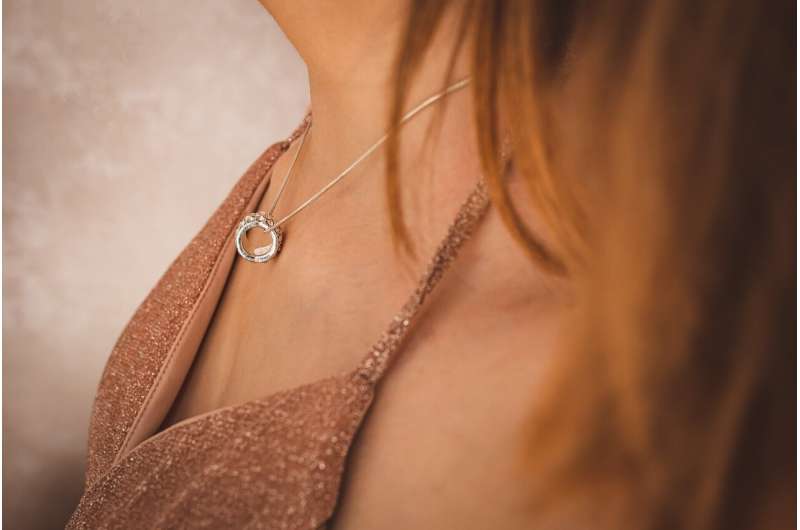This article has been reviewed according to Science X's editorial process and policies. Editors have highlighted the following attributes while ensuring the content's credibility:
fact-checked
trusted source
proofread
17th-century anti-décolletage campaign was form of misogyny, author asserts

A 17th century French clerical/commercial campaign against décolletage—fashions in which women reveal the cleavage between their breasts—was motivated more by misogyny than moral outrage, according to a University of Kansas scholar.
And it was a huge failure, anyway.
That is the conclusion drawn by Paul Scott, professor of French, in his new article "Décolletage disputes in early modern France" in the latest edition of the journal The Seventeenth Century.
Scott wrote that while some scholars have plucked caustic quotes from the ecclesiastical treatises against décolletage (one prelate called unclothed breasts "pillows for demons"), no one has previously studied the campaign as a whole, and certainly not for its misogynistic import, as he does.
"The reaction against décolletage isn't really about the fashion at all," Scott said. "It's about women's independence. This is all about controlling female agency."
In the 17th century, Scott said, women were starting to be taken seriously as interlocutors at the increasingly popular salons—private gatherings at which issues and philosophies would be discussed among the intelligentsia in Paris and other French cities. "Or as some called them, 'these dangerous assemblies,'" Scott said.
The KU researcher traces the anti-décolletage campaign to a highly secretive group of French Catholic lay leaders called the Compagnie du Saint-Sacrement, or Company of the Blessed Sacrament.
"It's actually a laity-led movement," Scott said. "It's basically a secret lobby group, and in their meetings they discuss at length and then decide that décolletage is a great social threat. And so they decided to clean society up a bit. They put pressure on the priests. And the implication is financial pressure, as well: If you don't do this, then the collection plate on Sunday is going to be a little lighter than it normally is."
Scott pored over digitized collections of 17th century writings and sermons issued as part of this campaign, and he visited the French fashion museum Palais Galleria, Musée de la Mode de la Ville de Paris to understand how women's clothing necklines changed over time.
"The first time that we know of décolletage is in the 13th century," Scott said, "and then it comes and goes. It starts off again in Louis XIV's France, around the 1650s, and it never goes away. And one of my arguments with this research is that although we don't have any direct response from women in opposition to these arguments—in fact, the only examples we have of women dealing with this topic is actually to join the moralists and say it's terrible—the fact that this sporadic fashion became a fixture from then on shows that women actually responded by just keeping it—and what a powerful form of resistance."
In the end, Scott said, the anti-décolletage campaign must be considered a spectacular failure. The attempt to repress women's sexuality "revealed that we are all sexual creatures," Scott said.
The reverberations of the campaign are felt down to the present day, Scott said. Not only did the removable modesty scarf that some women adopted become today's scarf or necktie, the calumnies heaped on women who dared reveal their décolletage are still heard today.
"It occurred to me that this rhetoric, which we can recognize today, was first set in print and first became a widespread, mainstream, socially acceptable rhetoric in the 17th century," Scott said.
More information: Paul Scott, Décolletage disputes in early modern France, The Seventeenth Century (2023). DOI: 10.1080/0268117X.2023.2241422
Provided by University of Kansas





















